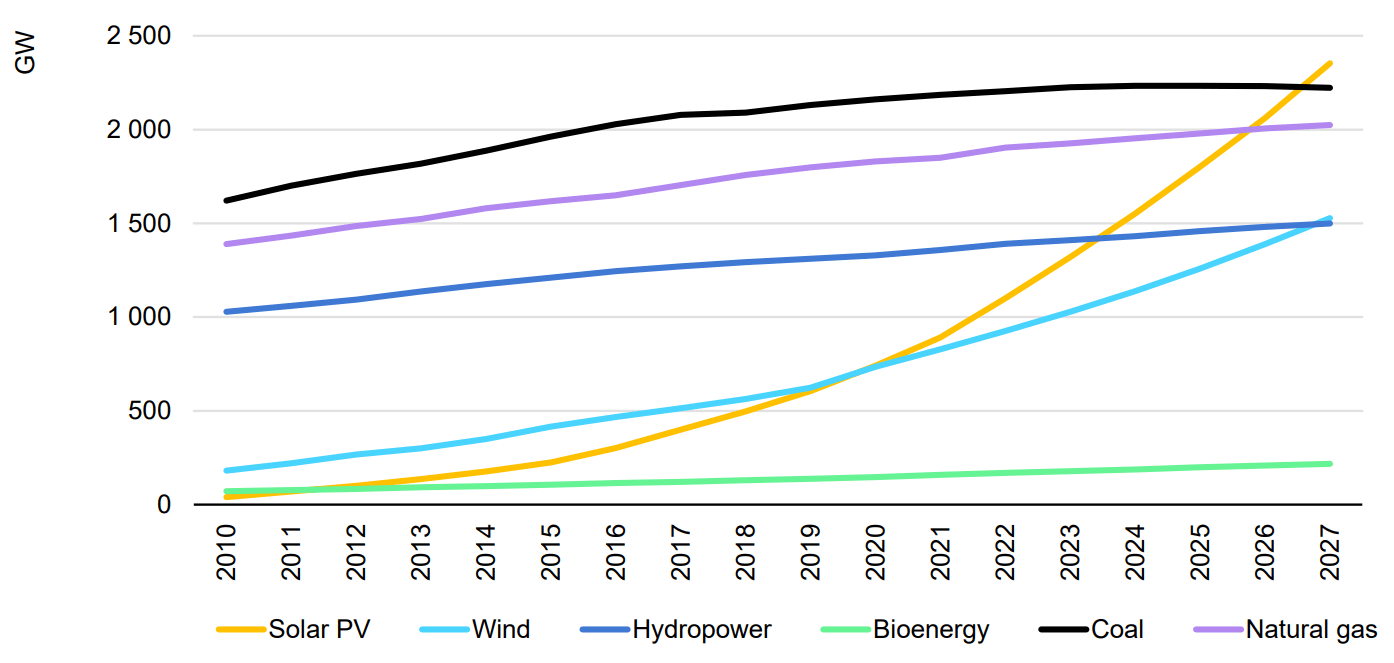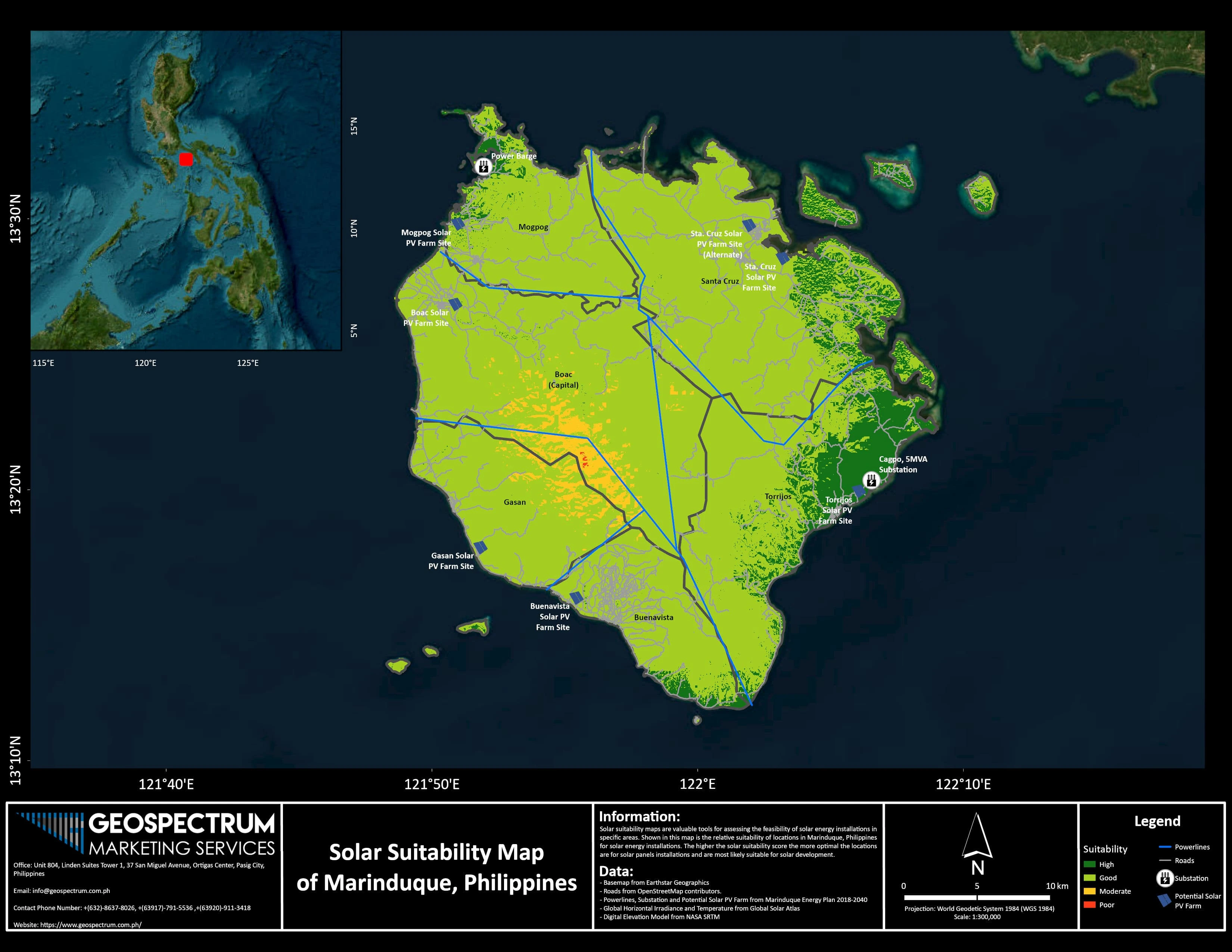Embracing the Power of the Sun: Mapping the Philippines’ Solar Potential
By Ara Joy Abatayo, Assistant Remote Sensing Specialist
Geospectrum Remote Sensing | Jan 20, 2025
READ TIME: 7 MINUTES

Figure 1: The exposure to sun holds a significant potential in harnessing solar energy. Image Source: Abatayo (2022)
In an era where energy demands are skyrocketing and environmental concerns are at
the forefront, the debate between renewable energy sources and traditional fossil fuels is more
pertinent than ever.
Solar power, harnessing the Sun’s abundant and renewable energy, offers a cleaner and more
sustainable alternative to fossil fuels, which have long been the foundation of global energy
production[1].
Solar energy is one of the most promising sources of energy and its share in the global energy mix
has steadily increased over the past years [2]. According to the International Energy
Agency’s
analysis from the World Energy Outlook 2022, renewable electricity generation is expected to grow
overall. Hydropower will continue to be the dominant source of electricity generation throughout the
forecast period, although its capacity expansion will be outpaced by that of wind and solar
photovoltaic (PV) technologies. Solar PV’s installed power capacity is on track to surpass that of
coal by 2027, making it the world’s largest source of power [1].

Figure 2: Global Cumulative power capacity by technology. Source: International Energy Agency’s analysis based on the World Energy Outlook 2022 (2022).
While countries in Southeast Asia have widely adopted solar energy, the Philippines, despite its significant potential, has fallen behind in both policy execution and deployment [1].
Energy Demographic in the Philippines
In the Philippines, fossil fuels, particularly coal, play a significant role in the energy landscape [3]. Despite the country’s abundant renewable energy resources, fossil fuels still dominate the power generation mix due to the growing energy demand driven by population growth and economic expansion [4]. Besides coal, oil is also extensively used in the transportation sector, with gasoline and aviation fuels being major contributors [5]. Although minimal, natural gas also takes part of the energy mix [4].

Figure 3: A coal barge off Masinloc, Zambales, ran aground during Severe Tropical Storm Kristine, spilling up to 11,000 metric tons of coal and threatening coastal communities and marine life. Source: Greenpeace Philippines, photo by Noel Celis (2024)
The Philippines relies heavily on imported fossil fuels, to meet its energy needs. This dependence on imported fossil fuels makes it susceptible to fluctuations in prices and interruptions in supply, affecting both energy security and costs [6]. This reliance also leads to increased greenhouse gas emissions and environmental degradation [4]. The instability of fossil fuel prices has driven the quest for more viable and sustainable power generation methods [2].
Search for Viable and Sustainable Power
As the adverse effects of fossil fuels became more evident, the urgent need for sustainable and cleaner energy sources grew [7]. The country is abundant with indigenous energy resources, particularly geothermal and biomass. However, they are not fully utilized due to lack of financial investments [4]. Solar power, however, offers a promising solution to mitigate the impact of fossil fuels. With the abundant exposure of the Philippines to the Sun, it holds a significant potential in harnessing solar energy. According to the National Renewable Energy Laboratory, the country has an average solar radiation range from 128-203 watts per square meter, on an average of 161.7 watts per square meter, based on sunlight duration [2]. By tapping into the country’s solar potential, we can significantly reduce greenhouse gas emissions, enhance energy security, and promote economic development through green job creation.
Mapping of Solar Power Suitable Areas with Geospectrum Analytics
At Geospectrum, we leverage the use of Geographic Information System (GIS), a computer-based tool that visualizes spatial data [9] and remote sensing, a process of collecting and analyzing data from satellite platform [10], to assess areas with the highest solar radiation. By utilizing high-resolution Digital Terrain Model (e.g. AW3D) and the Fuzzy Analytic Hierarchy Process (Fuzzy-AHP), we can effectively evaluate areas with the highest solar radiation. This comprehensive approach enables us to identify optimal locations for solar panel installations, ensuring maximum energy efficiency and sustainability.

Figure 4: Relative solar power suitability of Marinduque Island, Philippines.
Solar suitability maps are valuable tools for assessing the feasibility of solar energy
installations in specific areas. Shown in Figure 4, is a map of the relative suitability of
locations in Marinduque for solar energy installations. The higher the solar suitability score the
more optimal the locations are for solar panels and are most likely suitable for solar development.
Several criteria are considered when creating solar suitability maps. Criteria include global
horizontal irradiance, temperature, slope, aspect, distance to substation, power lines and major
roads. Other factors include flood risk and land cover. Each criterion carries weight for
determining final score, which is based on a range of 0-100%.
Geospectrum applied the foregoing analytics and relevant criteria to assess the suitability of the
island province of Marinduque for solar power generation. Marinduque with its abundant sunshine and
diverse landscapes, offers several ideal locations for solar installations. The towns of Torrijos
and Mogpog are particularly promising with their high solar suitability potential and proximity to
existing power sources. These areas, with their commitment to sustainability and energy
independence, are prime candidates for expanding solar energy infrastructure.
By combining spatial data analysis with advanced decision-making techniques, we can make informed
recommendations that support the effective deployment of solar energy solutions.
Are you curious about how our analytics can support your goals? Contact us through email at
[email protected] or contact us at +(632)
8637-8026 or +(63917)-791-5536 to learn more about
solar suitability mapping and AW3D. You can also check out our website at www.geospectrum.com.ph to
learn more about the products and services we are offering.
References:
[1] International Energy Agency. (2019). Renewables 2022: Analysis and Forecast to 2027.
https://iea.blob.core.windows.net/assets/ada7af90-e280-46c4-a577-df2e4fb44254/Renewables2022.pdf.
[2] Deutsche Gesellschaft für Internationale Zusammenarbeit (GIZ) GmbH, Renewable Energy Developers
Center (REDC), & WWF Philippines. (2023). IT’S MORE SUN IN THE PHILIPPINES: Facts and Figures on
Solar Energy in the Philippines Project Development Programme (PDP) Southeast-Asia. Department of
Energy.
https://doe.gov.ph/sites/default/files/pdf/netmeter/policy-brief-its-more-sun-in-the-philippines-V3.pdf
[3] Gonocruz, R. a. T., Yoshida, Y., Silava, N. E., Aguirre, R. A., Maguindayao, E. J. H., Ozawa,
A., & Santiago, J. V. (2024). A multi-scenario evaluation of the energy transition mechanism in the
Philippines towards decarbonization. Journal of Cleaner Production, 438, 140819.
https://doi.org/10.1016/j.jclepro.2024.140819
[4] Balita, C. (2024). Energy sector in the Philippines - statistics & facts. Statista.
https://www.statista.com/topics/8548/energy-sector-in-the-philippines/#topicOverview
[5] Department of Energy. (2019). Philippine Energy Situationer & Key Energy Statistics.
https://doe.gov.ph/sites/default/files/pdf/energy_statistics/2019-energy-situationer.pdf
[6] Evangelista, T. (2024). Energy in the Philippines: challenges & opportunities. Richest
Philippines. https://richestph.com/energy-in-the-philippines-challenges-opportunities/
[7] Intergovernmental Panel on Climate Change. (2022). Climate Change 2022: Mitigation of Climate
Change.
[8] U.S. Department of Energy. (2023). Solar Energy Technologies Office.
[9] Longley, P. A., Goodchild, M. F., Maguire, D. J., & Rhind, D. W. (2015). Geographic Information
Systems and Science. Wiley.
[10] Campbell, J. B., & Wynne, R. H. (2011). Introduction to Remote Sensing. Guilford Press.




